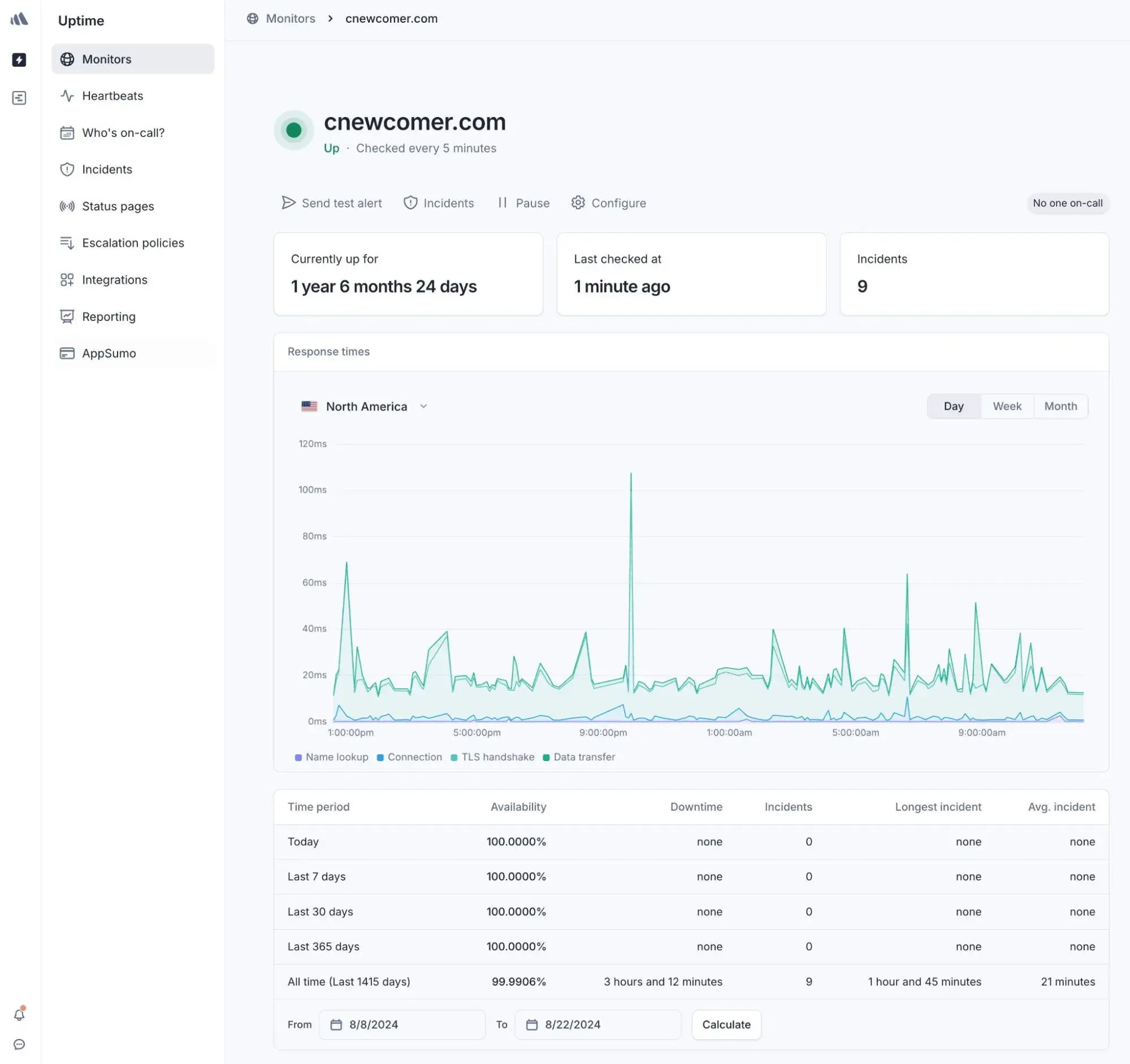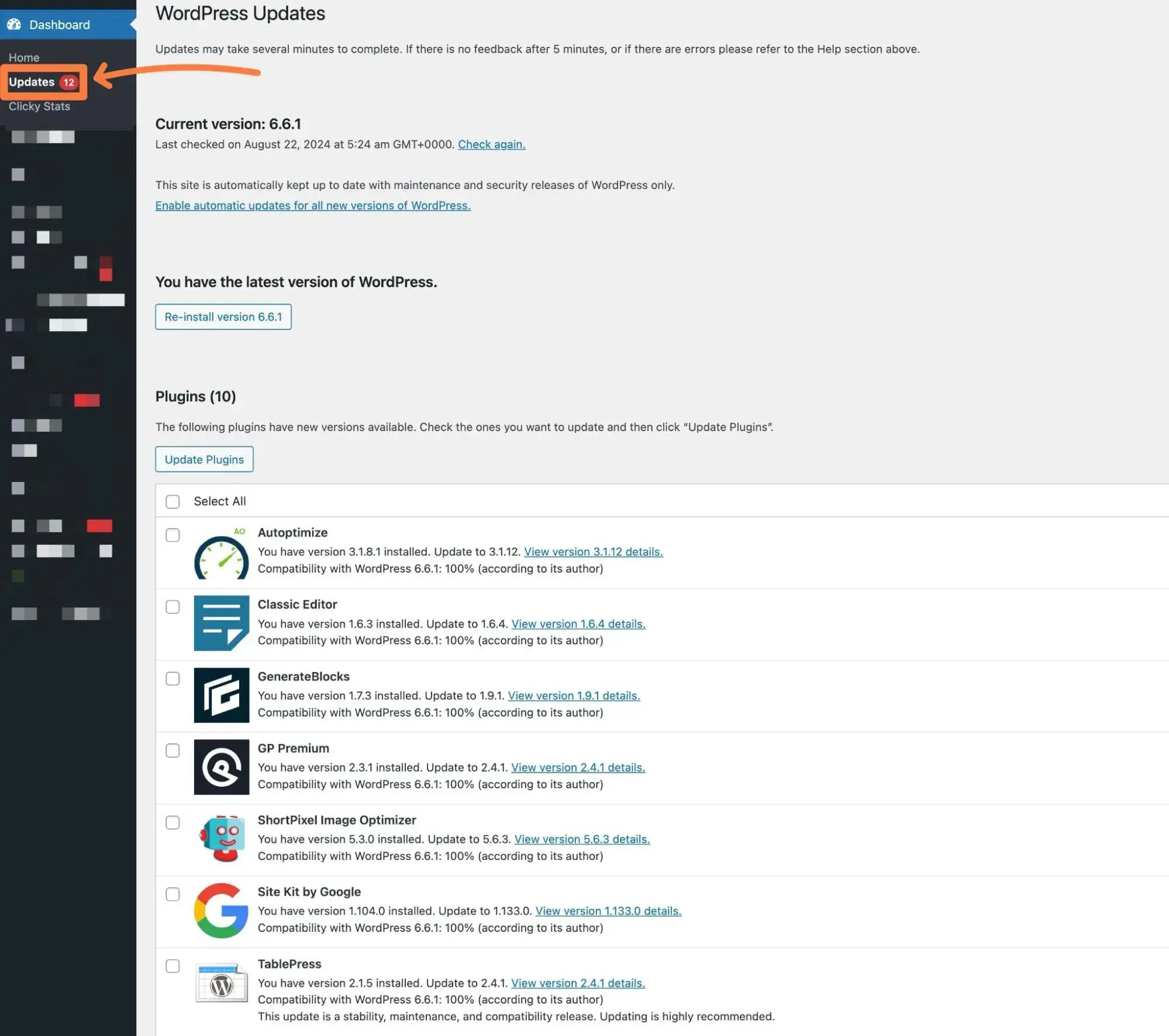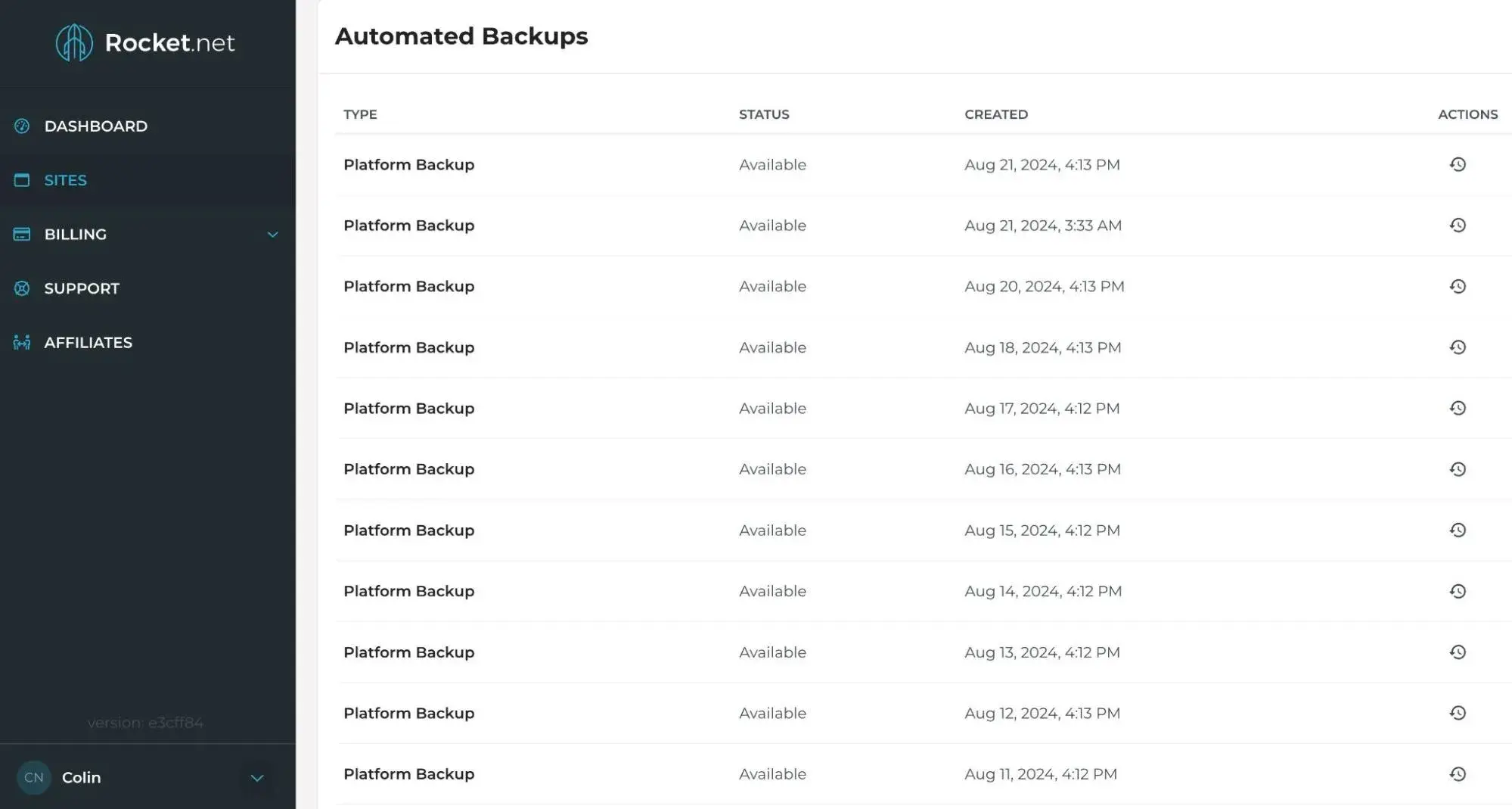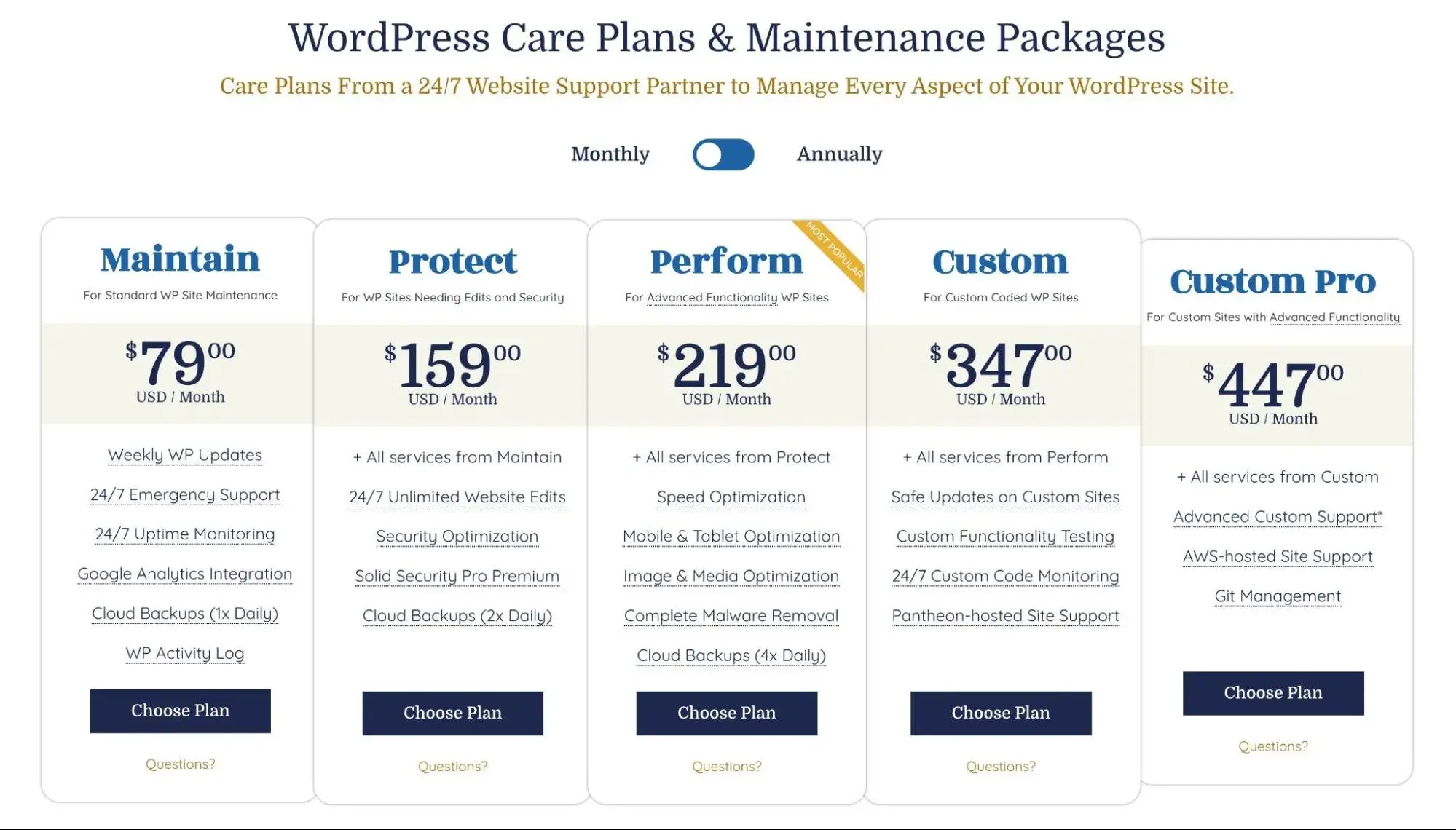Website maintenance is one of those things that doesn‘t matter … until it really matters. Your website is a little bit like a car — a car will keep running for a time without maintenance, but it’s eventually going to stop working someday (probably when you have an important work meeting!).
In this post, I‘m going to dig into website maintenance in detail so that you know what you need to do and when you need to do it. I’ll also cover some related questions, such as whether it's worth outsourcing website maintenance and how much it might cost to do that.
Table of Contents
- What Is Website Maintenance?
- Why is website maintenance important?
- Types of Website Maintenance
- Website Maintenance Tasks
- How often should you do website maintenance?
- Should you outsource website maintenance?
- Implement website maintenance the right way.
Website maintenance is something that every single website needs to perform, so it's essential to develop a maintenance plan for your site (or hire someone to do it for you). The rest of this post will be dedicated to helping you make that maintenance plan.
Why is website maintenance important?
Presumably, your website was working properly when you launched it. Given that, it‘s easy to assume that it will keep working the same way forever if you don’t change anything.
Unfortunately, that's not the case. Even if a website worked properly and was secure a year ago, those things might no longer be true today. Software is constantly changing and new security vulnerabilities are discovered all the time, which requires patching and updating software.
For example, if you look at the data behind why most websites get hacked, you‘ll find that most of the situations would’ve been entirely avoidable if the webmasters had performed basic website maintenance.
In Sucuri's 2023 Hacked Website and Malware Threat Report, they found that 39.1% of all the hacked websites were running out-of-date core software at the time of infection. What's more, another 13.97% were running out-of-date extensions that would have already been patched if the webmaster had applied the update.
That means that the simple maintenance task of promptly applying software updates could've potentially stopped more than half of the website hacks in Sucuri's data.

Beyond the technical aspects of your site, the information and user experience that your site provides might become outdated, which means your site might no longer be providing the best experience to your visitors.
For example, even though the content on your website was presumably accurate when you published it, details might have since changed that make your content no longer accurate. If readers encounter inaccurate content on your site, it might damage your brand.
Performing website maintenance helps you preemptively address all of these issues so that your site stays functioning and provides a great user experience both today and in the future.
Types of Website Maintenance
While I‘ll talk about specific website maintenance tasks in the next section, I think it’s important to recognize that there are different types of website maintenance you'll need to consider.
For some types of website maintenance, you might need to only perform them quarterly or even annually. However, for other types of website maintenance, you might need to perform them weekly or even daily.
Website and Data Security
One of the most important types of website maintenance is keeping your site and its data secure. I‘ll cover specific tasks below, but this generally includes backing up your site’s data, running security scans, checking uptime, updating software, and more.
These are some of the most frequent maintenance tasks that you‘ll need to perform. For example, for a busy website, you’ll generally want to back up your site's data at least once per day.
Thankfully, my experience has shown me that these types of maintenance tasks are also some of the easiest to automate. As such, you usually won‘t need to spend a lot of time here after the initial setup, unless there’s an issue somewhere (e.g., if a backup fails or a security scan discovers a suspicious file).
Software Updates
If you want to keep your site secure and functioning properly, another important type of maintenance is updating the software that powers your site. I talked about this in the section above, but I'm also giving it its own category because updates are just that important when it comes to website maintenance.
For example, if you‘ve built your site with WordPress, you need to make sure that you’re updating the core WordPress software, along with any plugins or themes that you're using. In general, I recommend checking in every week to see if there are new updates for your site.
On the other hand, if you built your website with a hosted website builder like HubSpot Content Hub, you might not need to handle updates yourself. This is because these types of website builders generally handle the updates for you.
Content Updates
In addition to updating the software on your website, another important type of website maintenance is updating the actual content on your site.
For example, I‘ve noticed that readers (and search engines) are starting to shift to preferring shorter, more scannable content with visuals. If you launched your website with very long and dense text-based content, you might need to update it to make sure you’re meeting your users' preferences for consuming content.
How often you update your site's content will really depend on your unique area. For some sites, yearly content updates might be plenty. For sites in niches where information is constantly changing, you might need to consider at least performing a brief content update every three or six months.
User Experience Checks
Beyond content updates, there are also some other user experience-based maintenance tasks that you'll want to perform.
You'll want to make sure your site is loading quickly, your forms are functioning properly, your checkout process is working properly (if you're accepting payments on your site), and so on.
You also might want to check that the plugins you're using on your site are still providing the best experience possible to your visitors.
Website Maintenance Tasks
Now that you know the different types of maintenance you‘ll encounter, let’s get into the actual maintenance tasks that you‘ll want to perform on various schedules. You can use this as a sort of website maintenance checklist to make sure you’re not missing anything important.
Your site might have unique maintenance needs that go beyond this list. But if you at least cover all of the things on this list, you should be set up for success when it comes to creating a secure, reliable, and user-friendly website.
1. Monitor your website's uptime. Every 5 Minutes.
One of the most fundamental website maintenance tasks is making sure that people can actually access your website, which is called your website's “uptime.” If a website experiences “downtime,” it will be temporarily unavailable during that downtime period.
Regardless of what your site is about, I recommend checking uptime at least every five minutes, which will alert you of potential access problems near-instantaneously.
Don‘t worry — you do not need to sit there manually refreshing your website every five minutes. Instead, you can just set up one of the many uptime monitoring services and configure it to send you an email and/or text message if it’s ever unable to access your site.
Personally, I use the Uptime tool from Better Stack and the free UptimeRobot service (yes, I use two services because I'm super paranoid about downtime), but there are lots of great uptime monitoring tools.

If you use HubSpot's free content management system for your website, it includes built-in website monitoring, including uptime monitoring. You can build your website using a drag-and-drop builder and then benefit from reduced maintenance effort. Pretty cool!
2. Update your website's software. Weekly.
If you‘re using a self-hosted tool like WordPress to build your website, it’s essential to apply updates to all of the software on your site, including the core software as well as any extensions that you're using.
I recommend checking for new updates at least on a weekly basis. In WordPress, you can check for updates by going to Dashboard → Updates. Or, you can receive alerts when there are new updates available using something like the Email Notifications for Updates plugin.

For larger WordPress updates, you can consider enabling maintenance mode while you apply and test the updates. Or, for mission-critical sites, I personally recommend applying the updates on a staging site before doing so on your live site.
You can also consider enabling automatic updates if you feel comfortable. WordPress supports automatic updates for the core software, plugins, and themes. Thanks to a recent release, WordPress can now automatically roll back plugin or theme updates that fail, which makes me feel a lot safer using automatic updates.
As I mentioned above, you might not need to apply updates yourself if you're using a hosted website builder like HubSpot Content Hub. So, if needing to deal with regular updates sounds difficult to you, I recommend considering one of those website builders instead.
3. Back up your site's data. Daily or weekly.
In general, I recommend taking a complete backup of your site's data at least once per week.
If you regularly publish new content and/or have lots of user activity on your site, I recommend increasing this to a minimum of daily backups (or even real-time incremental backups for something like an ecommerce store or membership website).
With most website platforms, you can automate this process. For example, most WordPress backup plugins include a scheduling feature. Many web hosts will also automatically take daily backups as part of their hosting service — just make sure that they're storing these backups in a secure off-site location.
Personally, I rely on my host's backups because my host stores them in a safe location.

Some website builders also handle backups for you. For example, HubSpot Content Hub includes built-in backup functionality, which means you won't need to manually mess around with backups.
4. Run security scans. Daily.
Keeping your website's software updated is a great way to prevent security issues. However, security problems can still happen, which is why running regular security scans is still an essential website maintenance task.
To make sure you catch potential issues quickly, I recommend running security scans daily. Pretty much every security tool and plugin supports automatic scanning, so you won't need to do anything manually after the initial setup process.
You will need to manually address any issues that the scan detects, but most tools will notify you of issues via email, so you don't need to manually check the results every day.
5. Check your website's analytics. Daily or Weekly.
Whether you have a portfolio website or an ecommerce store (or anything in between), I also recommend building regular analytics checks into your website maintenance checklist.
By “analytics,” I typically recommend checking at least the following tools:
- Web analytics. This could be Google Analytics, your HubSpot analytics, or other analytics service. You'll want to check for any big changes or trends that could indicate something is happening (either good or bad).
- Google Search Console. If you connected your site to Search Console, check in periodically to track your performance and look for messages/warnings from Google.
- Search engine rankings. If you use a dedicated keyword rank tracker tool beyond Google Search Console, I also recommend checking in regularly to spot any trends in your site's rankings.
6. Test important user touchpoints (forms, checkout, etc.). Weekly (or more frequently).
To make sure important parts of your site are functioning properly, it's important to regularly test key user interactions on your site.
What these user interactions are will depend on the specifics of your site, but here are some common touchpoints to give you an idea of what you should test:
- Forms. These could be contact forms, lead generation forms, surveys, and so on.
- Checkout processes. This is important if you're selling products or services.
- User registration. If your site allows users to register, it's important to make sure that the registration process continues to function.
- Comments and reviews. If your site allows users to submit comments or reviews, you'll want to make sure those forms are working properly.
I recommend testing these interactions on a frequency that makes sense for their importance, with weekly testing being a good starting point. For example, if a certain action is integral to you making money, you might want to test that more frequently.
For a lot of sites, I think manually testing these elements is a fine approach. However, there are also ways to automate testing using tools that offer transaction monitoring. Pingdom and Uptrends are two good places to start.
For example, Pingdom lets you record a set of actions in your browser, which lets you automate your testing without needing any technical knowledge.

7. Run performance tests. Weekly (or Automated).
Having a quick-loading website is essential for creating a good user experience. Even if your site started out loading fast, changes and updates might cause it to slow down over time.
To avoid this, I recommend running performance tests on at least a weekly basis. For important sites, you can also set up automated performance monitoring, which can test your site every day and alert you if the service detects any drop in performance.
If you notice that your site has slowed down, that‘s a good sign that you’ll need to dig in and debug what's causing the performance drop.
8. Check for broken links. Monthly.
Having broken links on your site can negatively impact both user experience and search engine optimization, so you'll want to periodically check for issues.
The exact frequency can vary according to your preferences. I suggest monthly as a starting point, but it's also fine to do it less frequently for smaller sites.
If you're using WordPress, you can easily check for broken links using the Broken Link Checker plugin, which will automatically flag broken links on your site.
However, I personally prefer using a third-party tool as it won‘t consume my site’s hosting resources. You can use something like Dead Link Checker if you want a cloud-based tool, but I personally prefer using the free Screaming Frog SEO Spider software because it lets me easily check my entire website for broken links.
9. Audit your content. Biannually to Yearly.
To ensure accuracy and user experience, I recommend updating (or at least reviewing) your content at least once per year if possible.
This frequency might not always be possible depending on the size of your content library and team. But you should strive to at least try to keep your content updated on whatever schedule you can make work for your organization.
You can check out our content audit guide for some more specific tips, as I think that explaining how to do a proper content audit requires a whole post of its own.
10. Audit your plugins. Yearly.
If you're using WordPress (or another platform that allows extensions), another important maintenance task is to audit your plugins once per year.
This task was suggested to me by Karol Król, author of the WordPress Complete book and the man behind NIO.tips:
“I review the plugin stack on my site and check if newer, better, or smaller (in disk space) alternatives have been developed to serve the same purposes. Look for wins such as replacing three plugins with two, upgrading to a more modern or feature-rich plugin, or opting for a plugin with a smaller footprint.”
He recommends specifically looking at your security, form, and cookie consent plugin, though you might find other plugins with good opportunities.
By doing this plugin “Spring Cleaning,” you can make sure that you‘re always using the extensions that will help you best achieve your website’s goals.
11. Renew your domain name and licenses. As needed.
This last one won't happen on a specific schedule. However, another important part of website maintenance is making sure that you renew all of the services and products that your website relies on.
At a bare minimum, this means that you‘ll need to renew your domain name every year. I’ve seen so many stories of webmasters who forgot to renew their domain names and lost access to their sites, and it's always incredibly sad.
Don't let that happen to you — build domain renewal into your website maintenance checklist and make sure you get it done on time.
Personally, I don't like relying exclusively on automatic renewals because there could always be a problem with my payment method. I've also seen this happen with webmasters who thought they'd enabled automatic renewals, but a payment method issue meant that their domains still expired.
Instead, put the date on your calendar and renew your domain name well in advance of its expiration date. If you have the money, you can even pay for several years upfront.
Beyond that, you also might need to renew other things, such as your plugins, theme, analytics tools, and so on. For example, I have an upcoming license renewal for WP Rocket that I need to make sure I handle.

How often should you do website maintenance?
How often you perform website maintenance really depends on the specific type of maintenance, which I tried to highlight in the list above.
For some tasks, once a year might be enough. For other tasks, you'll need to set up some type of automation to do them multiple times per day. Of course, there are also lots of tasks that fall between those two ranges.
I've been maintaining multiple high-value websites for over a decade now, and my experience has shown me that the recommendations in the list above should work pretty well for most sites.
The only important thing is that you know which tasks are which and build a plan that lets you accomplish everything on the proper schedule.
Should you outsource website maintenance?
If performing some or all of these maintenance tasks feels overwhelming to you, I think outsourcing is something worth considering.
You can find services, freelancers, and/or agencies who can help with some or all of the website maintenance process.
Of course, while all of that sounds great, the tradeoff is obviously that you're going to need to pay money to get those benefits.
How much does a website maintenance service cost?
Here are some of the factors that can affect how much website maintenance costs:
- Website builder. Whether you built your site with WordPress, a different website builder, or a custom site.
- Complexity of your site. For example, getting someone to maintain your ecommerce store will almost always cost more than getting someone to maintain your basic blog.
- Scope. Having someone handle basic tasks like backups and updates can be very affordable, but the cost can rise if you also want help with things like content updates and code tweaks.
To give you some hard numbers, let's take a look at some of the most popular WordPress maintenance services:
- WP Buffs. Plans start at $79 per month and go up to $447 per month for more complex needs.
- FixRunner. Plans start at $59 per month and go up to $500 per month for more complex sites.
- ThriveWP. Plans start at £45 per month and go up to £90 per month.

In general, you should expect basic site maintenance plans to start around $50 per month, which will typically get you backups and updates, potentially also with uptime monitoring and basic security scans.
For more complex sites or help with additional tasks, you should budget more — typically in the $100 to $500 range. That‘s my own personal recommendation, and it’s also backed up by the ManageWP team, who give the same estimate for the cost of website maintenance.
How to Decide Whether to Outsource Website Maintenance
Here are some things I think you should consider when deciding whether or not to hire someone to do your website maintenance:
- The purpose of your site. If the main goal of your site is to make money, I think you should be more willing to outsource important maintenance tasks. On the other hand, if it's just a fun hobby site, outsourcing maintenance might not be worth it.
- Your technical knowledge. While you certainly don't need to be a developer to maintain a website, some website maintenance tasks do at least assume a small amount of technical familiarity, such as the best way to store a backup. If you already feel a bit uncomfortable with the basic website maintenance tasks, I recommend considering outsourcing them to someone more experienced.
- Your budget. If you're on a very tight budget, you can keep your costs lower by handling maintenance yourself. While this will take more time, it will save you money.
- How busy you are. If you're already spending all your time creating content and marketing your site, spending the money on a maintenance service could be worth it because it will let you focus on optimizing those tasks (which are essential if you want your website to grow).
- The complexity of your site. For simple blogs, portfolios, or business brochure websites, I think even a non-technical person can handle maintenance just fine. But for sites like ecommerce stores or membership websites, I definitely recommend hiring a professional as those sites require more knowledge to maintain.
When in doubt, I think that you can always just start off by handling all of the maintenance yourself. Once you've done this for a bit, you should have a better idea of whether outsourcing makes sense, either because the maintenance tasks are too technical for you or they just consume too much of your time.
If your website earns revenue, delaying your decision to outsource will also give you more time to build up your site's income streams. Once you have more revenue coming in, you might find it easier to fit outsourced website maintenance into your budget.
Implement website maintenance the right way.
Based on my 10+ years of experience running websites, trust me when I say that website maintenance isn‘t something that you can afford to ignore. If you want your site to stay reliable, secure, and user-friendly, it’s essential to follow the website maintenance strategies that I shared in this post.
To avoid mistakes, I recommend automating as many maintenance tasks as possible. You can do this for updates, backups, performance scans, uptime monitoring, and other essential tasks.
For everything else, I recommend either adding tasks to your calendar to ensure you don‘t forget. Or, if you don’t want to be responsible for website maintenance, I recommend just spending the money to outsource it to a trusted professional. The only thing you cannot do is ignore website maintenance.
Website Design


.png)







![Creating a Web Design Contract That Keeps Your Project on Track [+ Expert Tips]](https://53.fs1.hubspotusercontent-na1.net/hubfs/53/web-design-contract-1-20250312-1603286.webp)

![The Podcaster's Guide to Embedding Your Show on Your Website [+Step-by-Step Tutorial]](https://53.fs1.hubspotusercontent-na1.net/hubfs/53/embed-podcast-on-website-1-20250226-2656001.webp)